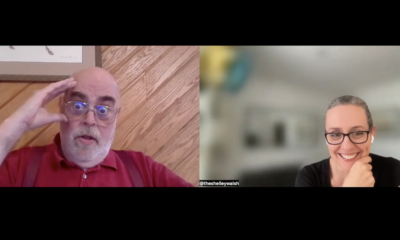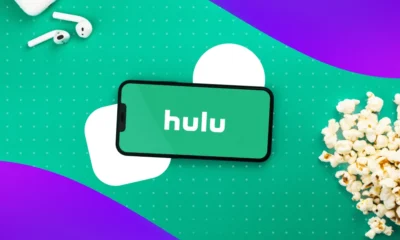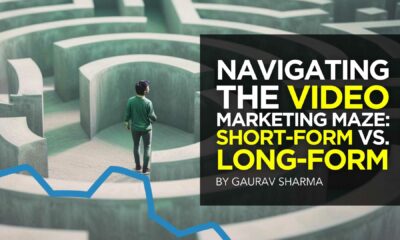MARKETING
Why we care about video advertising
Video has become an effective revenue generator for brands, especially on social platforms. In fact, digital video ad spending in the U.S. is up 50.8% compared to last year, with total revenues of $39.5 billion. Twitter receives over 2 billion video views every day, and 91% of active users watch videos on Instagram weekly. Clearly, having a video ad strategy is highly beneficial.
Customers are more responsive to video content than text, regardless of which channel it lives on. This can be credited to the fact that video content uses images, sound, and text to create an immersive experience.This can pose a new content creation challenge for marketers, though, and has led to the need for new tactics and technologies that focus on creating and executing video ad campaigns.
However, comparing and analyzing video ad performance across platforms isn’t as easy as it may seem. The growing popularity of video ads has prompted many social media platforms to modify and expand their video ad options and metrics, so bidding, view counting, and reporting can vary significantly from platform to platform.
For instance, viewing a video for three seconds or more is considered a view on Facebook and Instagram. In contrast, watching a video ad for 11-30 seconds is considered a view on YouTube Trueview ads. Many platforms also follow the Media Rating Council (MRC) standard or variations of it (more on this below).
To accurately analyze and leverage video ad results, advertisers need to understand the way each platform counts and charges for video ad views since they aren’t all the same. That’s why we’ve created this guide to provide an overview of how video ads work across various platforms and how marketers can use video ads to their advantage. We will cover:
- What are video ads?
- What counts as a video view on each platform?
- Additional video metrics to consider.
- How video ad measurement helps marketers succeed.
- Learn more about video advertising.
What are video ads?
A video ad is generally a short, informative video that aims to help promote a product or service. These ads can be anywhere from a few seconds to over a couple of minutes long. They are expected to be a concise representation of what the product and brand stand for and what they offer to the customers.
Video ads generally appear before, during, or after the non-commercial video content is played on video-sharing platforms like YouTube, Instagram, and Facebook. However, they can also be a short standalone video that aims to push a product/service in an innovative way.
How do video ad views work?
Platforms have different policies about how they display and treat their video ads. While some might consider a few seconds of viewing time as a view, others require users to watch the ad for a longer duration for it to count as a view. Engagement metrics also depend on what kind of ad is being shown to the user. An ad that plays before a video is usually treated differently from ads produced and published as standalone videos. This then affects the videos’ engagement metrics and how they will be promoted on the platform.
What counts as a video view on each platform?
The Media Rating Council (MRC) and Interactive Advertising Bureau (IAB) define a video ad as viewable when at least 50% of an ad is in view for a minimum of one second (for display ads) or two seconds (for video ads). While some social media companies and platforms have adopted this standard, many have defined their own view measurement systems.
Here’s a look at how some of the biggest companies define video views:
Google and YouTube
The skippable TrueView ads running on YouTube and the Google Display Network consider a video as viewed in either of the following scenarios:
- Someone engages with the ad by clicking on it or a CTA link.
- Someone watches at least 30 seconds of the video ad if it is longer than 30 seconds.
- Someone watches for the entire ad duration if it is shorter than 30 seconds.
Unique metrics to keep in mind
YouTube focuses on simple engagement metrics like watch time, audience retention, and demographics. This means that for YouTube video ads, you need to tailor content that:
- Keeps the audience engaged throughout the video.
- Keeps the audience coming back to your account for more content.
- Is being watched by people of the age, race, gender, and geographical demographic that it was made to target.
Facebook and Instagram
Facebook and its subsidiaries, including Instagram, count a video as viewed for both in-stream and Stories video ads after three seconds of watching. However, you can choose to pay for video ads on either a cost per thousand (CPM) basis or a ThruPlay basis.
When buying on a CPM basis, an impression is counted when one pixel of the video ad comes into view. On the other hand, with ThruPlay, it’s counted as a view when the video is played to 97% completion or for 15 seconds, whichever comes first.
Unique metrics to keep in mind
Facebook and its subsidiaries give special attention to two engagement metrics: Reach and Engagement. Reach is the number of users/accounts that see your ad. These can be organic views from friends and followers, views from the video being shared by people to their followers, or by the platform’s algorithm suggesting it to viewers. Engagement is how many people like, share, and comment on your ad post. Facebook and Instagram ad strategies are largely tailored around optimizing both these metrics.
For LinkedIn’s sponsored content, videos are counted as viewed when 50% of the ad is in view and plays for two or more consecutive seconds- on both desktop and mobile.
Unique metrics to keep in mind
Apart from the standard view count (50%), LinkedIn also counts views at 25%, views at 75%, and views at 97-100%. As the names suggest, these metrics count the number of viewers watching the ad till a specific point. LinkedIn also focuses on its full-screen views, which is the total number of clicks to view a video in full-screen mode.
TikTok
On TikTok, it’s counted as a view as soon your video starts to play. If the video is on autoplay or loops, or a user rewatches the video multiple times, all of that is counted as new views too. However, watching your own video is not considered a view.
Unique metrics to keep in mind
TikTok counts your net views over the course of seven or 28 days. The counter is refreshed after every interval, but the initial watches count towards views and help the ad get more engagement so that they can be shown to a larger audience. TikTok also keeps track of how many followers your account gained within the last seven or 28 days and how many profile views it attracted.
Some other video-sharing platforms with their own unique engagement metrics include the following.
Pinterest uses the MRC standard definition of views, so it measures the total number of times someone watches your video with at least 50% of the video in view for two or more consecutive seconds.
The video ads on Pinterest are used to generate brand awareness and conversions campaign objectives.
Reddit also follows the MRC standard and considers a video viewed after the video is played for at least two seconds at 50% viewability. However, a full video view is counted after the video plays for three consecutive seconds at 100% viewability. You can pay on a cost-per-view (CPV) or cost per thousand (CPM) basis.
Snapchat
Snapchat’s video ads play full-screen, typically with the sound on. It counts views after at least two consecutive seconds of viewing or a swipe-up action on the ad. Some ads also qualify as viewed after two seconds of consecutive watch time without the swipe-up action.
Twitter has also adopted the MRC standard and considers a video ad viewed when 50% of the video is viewed for two seconds or more. It is also considered a view when the viewer engages with the video by expanding or unmuting it. In contrast, a 3s/100% view is when your video is played for at least three seconds in 100% view and a six-second view is when your video is played for at least six seconds in 50% view.

Additional video metrics to consider
Many platforms offer more engagement metrics and view-counting mechanisms. For example, Google also tracks quartile watch time metrics and other key performance metrics such as click performance, engagement performance, and reach and frequency.
Facebook, too, offers quartile watch time metrics, showing how often users watched 25%, 50%, 75%, or 100% of a video ad. It also used to report two-second, three-second, 10-second, and ThruPlay views for all bidding options; however, in 2019, the social media giant revealed that ThruPlay would be the default buying option for video ad campaigns and view optimization. As a result, advertisers had to manually switch their 10-second video ad campaigns to ThruPlay to keep their campaigns up and running.
Reddit reports views at 25%, 50%, 75%, 95%, and 100% of video length, as well as the number of times your video is started and played for at least three seconds, five seconds, and 10 seconds. It also shows the percentage of users who watched your video and clicked.
YouTube counts engaged-view conversions for in-stream ads whenever a user clicks on the video ad or watches 10 seconds or more of the skippable ad. The number of clicks your video receives can help you understand how your ad appeals to its viewers. YouTube also offers quartile reporting, showing how often a video is played to 25%, 50%, 75%, and 100%.
How video ad measurement helps marketers succeed
Video ads are an excellent way to create immersive ad campaigns that work better with modern audiences. These ads help your company get its message across concisely while also establishing a familiar brand image that resonates with users. Marketers can leverage video sharing platform metrics to create content that is designed to reach a large number of viewers within days of the initial launch. This allows them to use social media algorithms for generating high revenue and excellent leads for their company.
Additionally, studies have found that video messages make people happier than pure text, which can help break the overall negative mood of business inboxes. Marketers can use video ads to help their campaigns find a diverse, genuinely organic audience that is much more likely to engage with the ad and create loyal customers for the brand.
Learn more about video advertising
Video is an engaging tool for marketing and creating brand awareness. It leads across the board as the most popular and effective format with the highest ROI.
Here are some helpful video marketing resources to help you learn more about the best solutions for your brand:












![YouTube Ad Specs, Sizes, and Examples [2024 Update] YouTube Ad Specs, Sizes, and Examples](https://articles.entireweb.com/wp-content/uploads/2024/06/YouTube-Ad-Specs-Sizes-and-Examples-400x240.jpg)
![YouTube Ad Specs, Sizes, and Examples [2024 Update] YouTube Ad Specs, Sizes, and Examples](https://articles.entireweb.com/wp-content/uploads/2024/06/YouTube-Ad-Specs-Sizes-and-Examples-80x80.jpg)






You must be logged in to post a comment Login